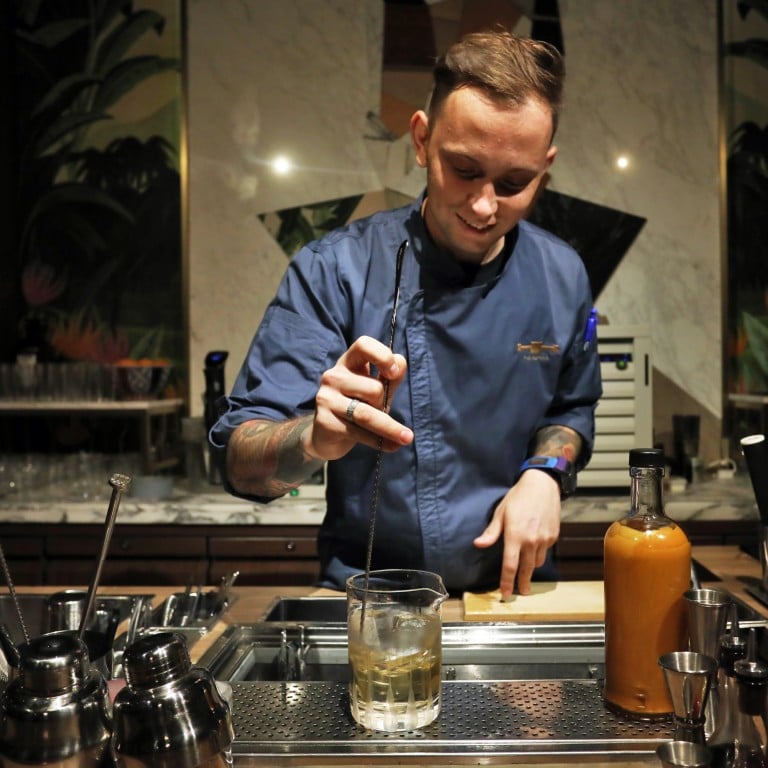Where to try molecular mixology in Hong Kong: upscale Central bars Quinary, The Old Man and even The Pontiac are shaking up the city’s cocktail scene

- Celebrity chefs like Ferran Adrià and Heston Blumenthal pioneered molecular gastronomy back in the 90s – now bartenders are bringing science to the mix
- Try carefully engineered cocktails like Quinary’s Earl Grey Martini or Men Without Women, a Hemingway-inspired, ‘inverted’ Irish Coffee served at The Old Man
Hong Kong’s bar scene is the strongest it has ever been. Not only did Coa top “Asia’s 50 Best Bars” list this year, there are nine other bars in the city on the list, too – more than ever before. It’s a far cry from the days when getting a decent drink in Hong Kong necessitated a trip to an overpriced hotel bar for a classic cocktail whose recipe hadn’t changed in 50 years.

The city’s drinks revolution can be traced back to the opening of Quinary in 2012. Founder Antonio Lai had dabbled with cutting-edge techniques before, at Luxe Manor, but his work was given a new, more visible platform at Quinary and would inspire local bartenders for years to come. Suddenly a martini didn’t need to be just gin and vermouth; it could be Earl Grey-flavoured, topped with a mass of “caviar” and a huge, eccentric swirl of foam.
“These days, this style of creating drinks is getting more recognition around the world,” says Kai Ng, Quinary’s bar manager, “and you can see an increasing number of bars in Hong Kong have started to employ molecular mixology and its technologies.” Which, Ng says, includes machines such as a rotary evaporator (aka “rotovap”), centrifuge and freeze dryer, among others.

Although not every bar chooses to be so hi-tech, molecular mixology has helped shape many of Hong Kong’s best cocktail spots. The term itself can be rather vague, however, and not even the name is something everyone agrees on. Lai and his acolytes at Quinary prefer “multisensory mixology”, which Ng defines as the use of certain techniques and equipment to “evoke your five senses with multidimensional flavours and molecular elements in the hopes of enhancing your drinking experience”.
The Old Man, voted Asia’s best bar in 2019, is another establishment dedicated to this machine-driven approach. Nikita Matveev, director of operations, likes to call it “21st century bartending” and considers these new techniques as essential as knowing how to properly shake a cocktail the old-fashioned way.
“Molecular mixology is how you’re going to show your skills, demonstrate your knowledge,” he explains. “Consistency is the first advantage of this process. Then there’s the wealth of natural flavours you can produce and the time saved doing things this way. Time is very important.”

Whatever the name used, the origins of molecular mixology are certain. As contemporary chefs such as Ferran Adrià and Heston Blumenthal probed the possibilities of molecular gastronomy in the 1990s so, eventually, did bartenders come to recognise the possibilities in their own areas of expertise.